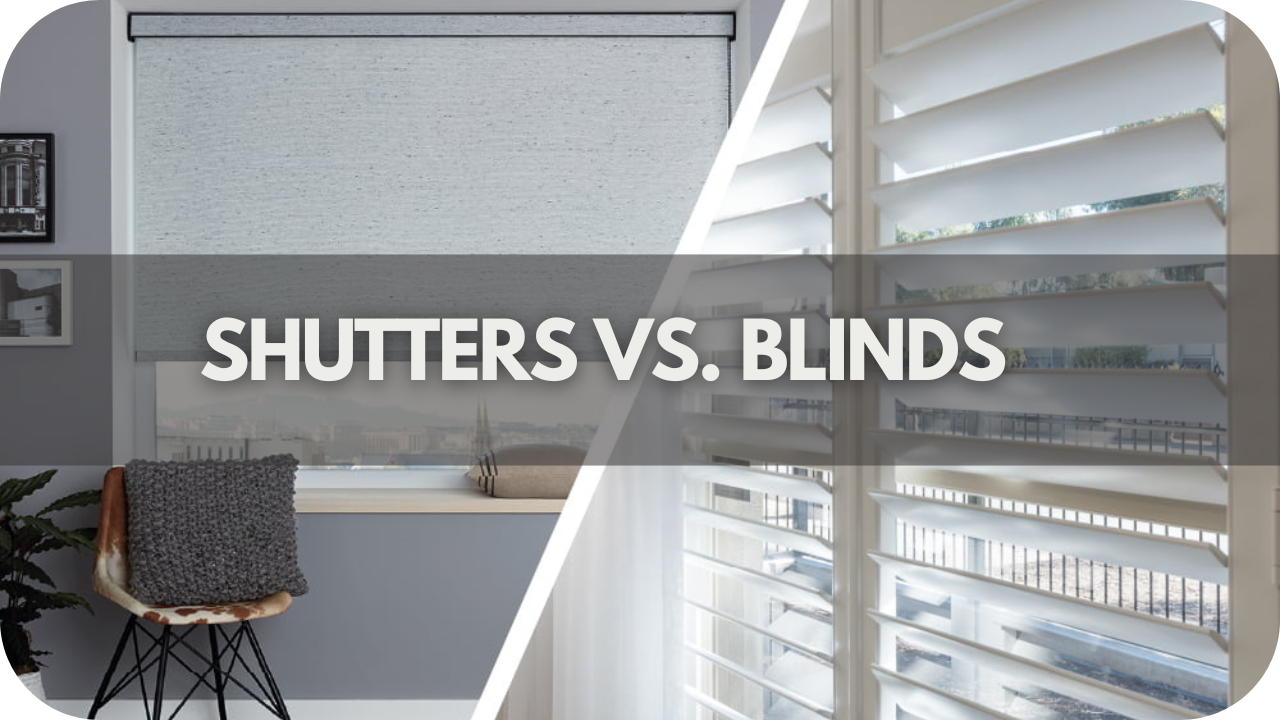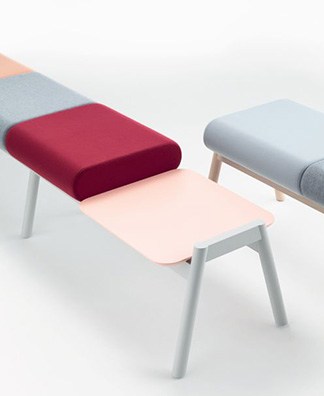When I first started redecorating my home, I was overwhelmed by the number of choices available for window treatments. Like many, I was stuck between two popular options – shutters and blinds.
Both had their appeal, but how could I know which was the perfect fit for my space? After extensive research and plenty of advice, I discovered that making the right choice came down to understanding the key differences. Here’s everything I learned to help you make an informed decision.
What Are Shutters?
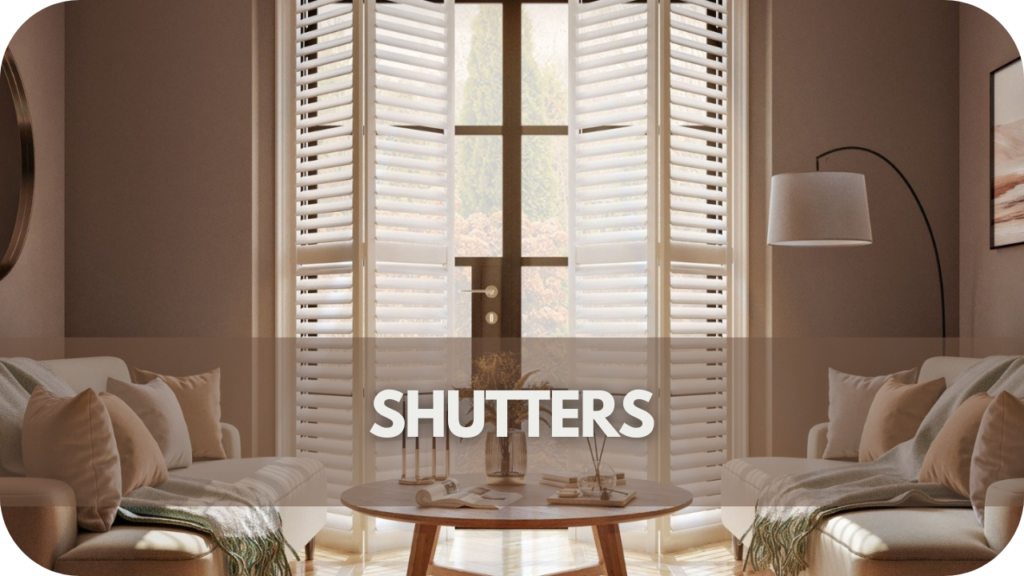
Shutters are a timeless window treatment option known for their durability and elegance. Typically made from wood, faux wood, or composite materials, shutters feature solid panels that can be adjusted to control light and airflow. But what sets them apart from other window treatments is their unmatched ability to provide both privacy and insulation.
One key feature of shutters is their louvred slats, which can be tilted to let in light while maintaining privacy. Shutters are available in various styles, such as full-height, café-style, or tier-on-tier, and offer versatility to suit any room. Additionally, they are permanently fixed to the window frame, giving them a more structured and polished look.
Maintaining shutters is simple, requiring only occasional dusting or wiping with a damp cloth. Due to their long-lasting nature, they are a cost-effective choice over time. Furthermore, their insulation benefits can help reduce energy bills by keeping rooms warmer in winter and cooler in summer. Stylish, durable, and practical shutters can elevate the aesthetic of any home while providing significant functional advantages.
What Are Blinds?
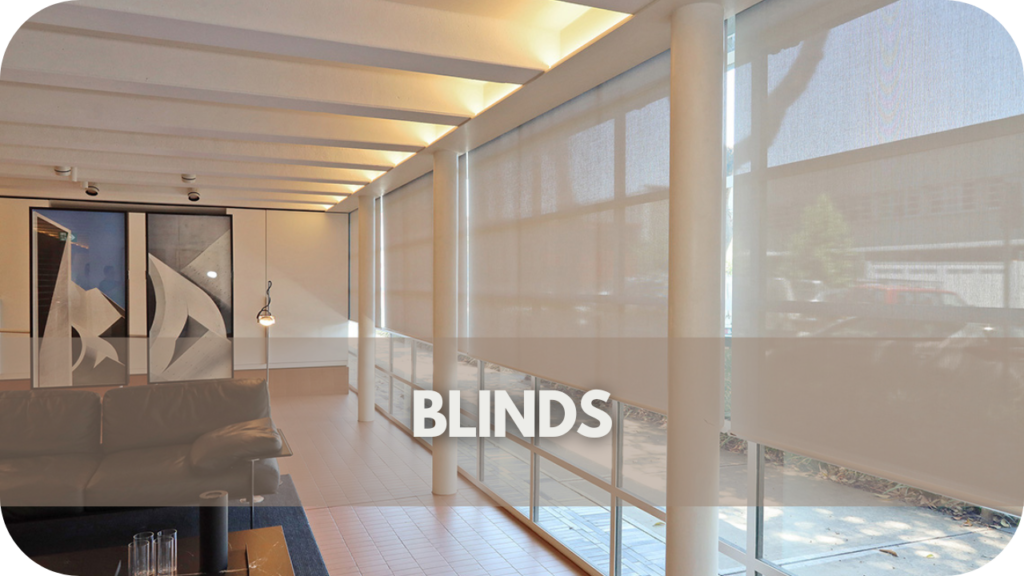
Blinds are a versatile and affordable window treatment option in various styles and materials. Whether you’re looking for roller, Venetian, or vertical blinds, there’s something to suit every home décor. But why are blinds so popular? Their ability to offer precise light control and privacy with just a simple adjustment makes them an excellent choice.
Blinds can be customised to fit any room’s design and are available in fabric, aluminium, wood, and faux wood. One significant advantage of blinds is their flexibility—they can be fully raised to allow maximum sunlight or lowered for complete privacy. You can choose between bedroom blackout options or light-filtering living area variants depending on your needs.
Cleaning blinds is usually straightforward, requiring only a quick dusting or wipe with a damp cloth. In terms of cost, blinds are often a more budget-friendly option compared to shutters, making them ideal for those looking for style on a smaller budget. For modern or traditional interiors, blinds offer a functional and stylish solution that’s easy to install and maintain.
Aesthetics: Which One Matches Your Style?
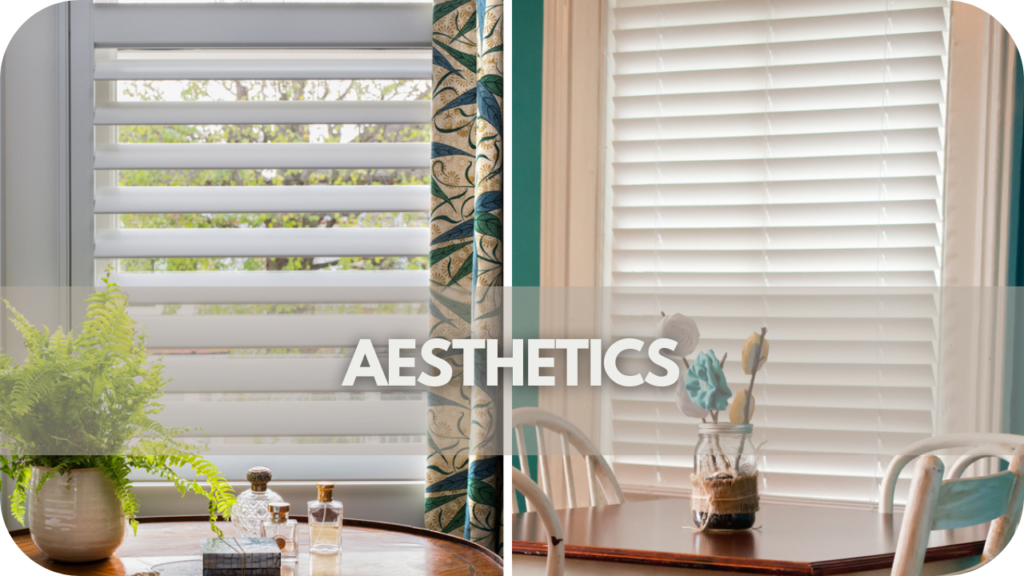
When it comes to aesthetics, choosing between shutters and blinds depends mainly on your interior style. Shutters offer a timeless, classic look that works well in traditional and contemporary homes.
With their clean lines and solid structure, they add an element of sophistication to any room. Shutters might be the perfect match if your design leans towards minimalism or modern elegance.
Blinds, on the other hand, are more versatile regarding style options. Whether you prefer sleek aluminium, textured fabric, or the warm tones of wooden blinds, there’s something to suit every taste.
Looking for a modern, understated window treatment? Blinds in neutral colours or natural materials blend seamlessly with minimalist interiors. Conversely, bold patterned blinds can be a striking focal point in a more eclectic space.
Considering your home’s overall aesthetic is key when making this decision. Shutters convey a more structured and permanent look, while blinds can offer a more relaxed, casual vibe. Your choice should reflect your taste and the atmosphere you wish to create in your home.
Light Control and Privacy: Which is More Effective?
Light control and privacy are essential factors when choosing between shutters and blinds. Thanks to their solid structure and adjustable louvres, shutters are highly effective at both.
You can precisely control how much light enters the room by tilting the slats while maintaining privacy. Shutters also offer complete coverage when closed, blocking out external light entirely, which is ideal for bedrooms or living rooms.
On the other hand, Blinds offer more flexible light control options. Roller blinds can be pulled down to block out light, while Venetian and vertical blinds allow you to adjust the slats, much like shutters.
In terms of privacy, blinds provide excellent control but may not offer the same full coverage as shutters when slats are tilted open. However, blinds come in various fabrics, from sheer to blackout, allowing you to customise light and privacy depending on your needs.
Ultimately, both shutters and blinds can deliver excellent light control and privacy. The decision comes down to your preference for style and the specific room’s requirements. Shutters offer more robust privacy, while blinds allow you to adjust light and privacy easily.
Energy Efficiency: Shutters vs. Blinds
Energy efficiency is an important consideration when selecting window treatments. Shutters are excellent insulators, particularly those made from wood or composite materials.
When closed, they create a barrier that helps to regulate indoor temperatures by blocking heat in summer and trapping warmth in winter. This makes shutters ideal for energy-conscious homeowners looking to reduce heating and cooling costs.
While blinds also provide some insulation, they are generally less effective than shutters. However, certain types of blinds, such as cellular or honeycomb designs, offer improved insulation by trapping air between the layers.
This creates a buffer that can help reduce energy loss. Blinds made from thicker materials can also help to minimise heat transfer, though they may not perform as well as shutters in extreme climates.
Does energy efficiency make a noticeable difference between these two options? Yes, shutters outperform blinds in energy conservation due to their solid structure and tight fit to the window.
However, for those looking for a more budget-friendly option, choosing the right blinds can still provide some energy-saving benefits while offering greater flexibility in design.
Maintenance and Cleaning

Shutters and blinds differ in terms of maintenance and cleaning. Shutters, particularly those made of wood or composite materials, are incredibly easy to clean.
A simple wipe-down with a damp cloth or occasional dusting is usually all needed to keep them pristine. Because they are solid and fixed, they don’t accumulate dust as quickly as other window treatments.
Blinds, on the other hand, can be slightly more labour-intensive. Venetian and vertical blinds have slats that can collect dust over time, requiring regular dusting or wiping with a damp cloth.
Fabric blinds, such as roller or Roman blinds, may need spot or even professional cleaning if stains occur. However, most blinds are designed with easy-to-clean materials, making maintenance manageable with routine care.
Does one option require more time or effort? Shutters typically involve less upkeep due to their durability and resistance to wear, while blinds may need more frequent attention, particularly in high-traffic or dust-prone areas.
Ultimately, both can be maintained with relative ease, but the material and type of window treatment will determine how much time is required for upkeep.
Durability and Longevity
Durability and longevity are key factors when choosing between shutters and blinds. Shutters are renowned for their long-lasting nature, often outlasting many other window treatments.
Made from robust materials like wood, composite, or vinyl, they can withstand daily wear and tear while maintaining their structural integrity for years. Shutters are also less prone to bending or warping, making them a durable investment for any home.
While generally durable, shutters may only last for a short time. Materials like aluminium or wood can withstand regular use, but fabric blinds may show signs of wear more quickly. Depending on the type and material, blinds can last anywhere from 5 to 10 years with proper care, though they may require replacement sooner than shutters.
Is one significantly more durable than the other? Yes, shutters tend to last longer, especially in high-traffic areas or homes with children and pets.
Though blinds can still provide years of reliable service, their thinner materials and design mean they may be more susceptible to damage over time. In terms of longevity, shutters offer the superior choice for homeowners seeking a durable, low-maintenance solution.
Cost: Which One Offers Better Value for Money?
Cost is often a deciding factor when choosing between shutters and blinds. Shutters are generally more expensive upfront due to their materials and craftsmanship. Made from wood, composite, or vinyl, shutters are built to last, which makes them a long-term investment.
Although the initial cost is higher, shutters add value to your home and can last for decades, making them a worthwhile purchase for those seeking durability and timeless style.
On the other hand, blinds are typically more affordable, making them a popular option for budget-conscious homeowners. They can be made from a wide range of materials, from fabric to aluminium, to fit any budget.
While the cost of blinds is lower, they may need to be replaced more frequently due to wear and tear, especially in high-use areas. This means the overall long-term value might not be as high as shutters.
Is paying more upfront for shutters worth it? If longevity and a premium look are your priorities, shutters offer better value over time. For those seeking an affordable, flexible solution, blinds provide a cost-effective option, though they may require more maintenance and replacement in the long run.
Room-Specific Recommendations
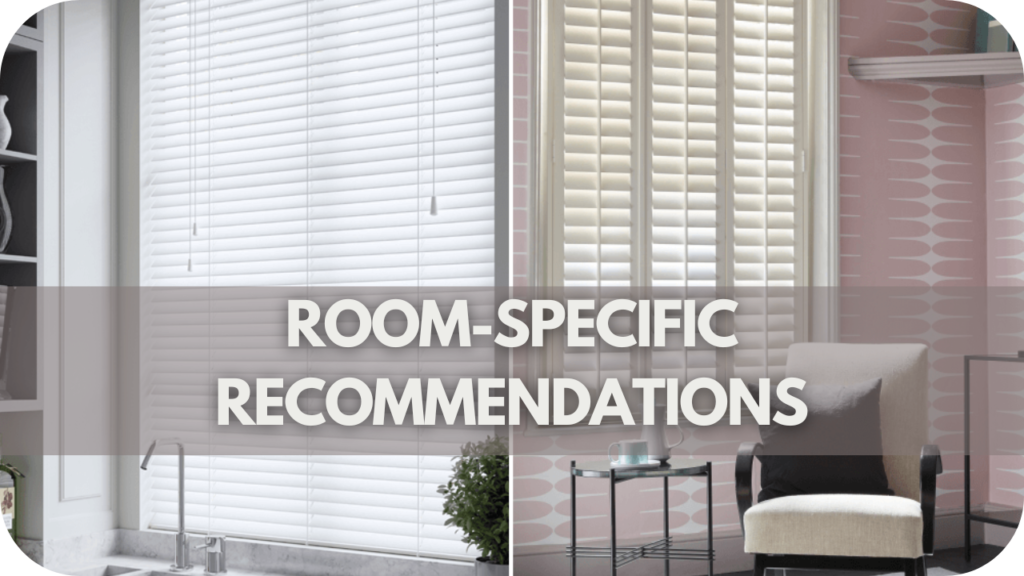
Choosing between shutters and blinds often depends on the specific room and its requirements. Shutters are a popular choice for kitchens and bathrooms due to their moisture-resistant properties, particularly when made from composite or vinyl materials. They are easy to clean and won’t warp in humid environments, making them ideal for these areas.
Blinds, however, work exceptionally well in living rooms and bedrooms where versatility is vital. Roller or Venetian blinds offer excellent light control, allowing you to easily adjust the room’s atmosphere. In spaces like living areas, where both style and practicality matter, blinds provide flexibility in both design and functionality.
What about spaces with large windows or patio doors? Vertical blinds are often a smart choice for these rooms, providing coverage without taking up much space. For areas where insulation is essential, such as bedrooms, shutters can offer additional energy efficiency by keeping the room warmer in winter and cooler in summer.
Ultimately, the choice between shutters and blinds should be tailored to the room’s needs. By considering factors such as humidity, light control, and energy efficiency, you can ensure the perfect fit for each space in your home.
Final Verdict: Which Should You Choose?
Deciding between shutters and blinds ultimately comes down to your priorities. Shutters may be the better option if you’re looking for long-term durability, timeless style, and added home value. Their robust design and superior insulation make them a wise investment for those who want both aesthetic appeal and functionality.
On the other hand, Blinds offer more versatility in style and cost. Blinds can provide an excellent balance of light control and design for homeowners who prefer flexibility and a more budget-friendly solution. Whether aiming for a modern, sleek look or a more traditional feel, blinds come in various materials and styles to suit any taste.
So, which should you choose? Consider the specific needs of your space—if energy efficiency and longevity are critical, shutters may win out. For those who need quick, cost-effective window treatments with lots of design options, blinds are an ideal choice. Ultimately, both options can elevate the look of your home, and the right decision depends on your personal preferences and room requirements.
Conclusion
Ultimately, the right window treatment depends on your style, budget, and room requirements. Whether you prefer the timeless elegance of shutters or the flexibility of blinds, both options offer unique benefits.
Ready to transform your home? Explore our range of shutters and blinds at Into Blinds to find the perfect fit today.

